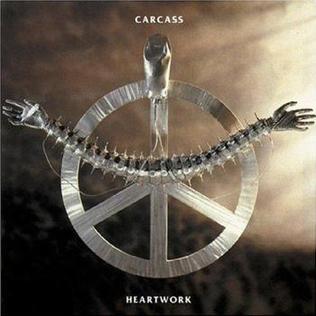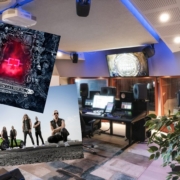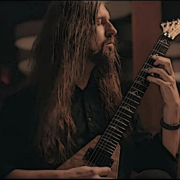The rise of a genre: melodic death metal
Last summer I witnessed an amazing headliner show of At The Gates at Metaldays, Slovenia. Hearing these titans live brought back so many found memories of my late night researches as a teenager on the outskirts of the internet, constantly digging deeper into the melodic death metal genre (MDM). For you youngsters out there, this was before you could just type in a name on YouTube! As a nineties kid I of course went through the almost obligatory nu metal entry point with Linkin Park (still loving Hybrid Theory and Meteora, by the way), but then I was handed Children of Bodom‘s Follow The Reaper album by an older colleague at my summer job. The Fins were my introduction to MDM (and more extreme metal in general) and quickly after hearing their high speed aggression combined with the melodic dual guitar harmonies, I started digging deeper into the roots of the genre. Follow me through an exploration of MDM.
[tabby title=”Origins”]
How does one create a new genre? Experimenting with different styles will definitely be one aspect. But I believe having an influential scene around you is also a bonus. Sweden had such a scene in the early nineties. Death metal’s popularity reached its peak with the American scene with bands as Cannibal Corpse, Obituary, Morbid Angel and so on. Sweden had its own type of death metal with a specific sound often described as a ‘buzzsaw’. The epicenter of this movement was in Stockholm with bands such as Entombed, Dismember, Unleashed and Grave. The competition with Norwegian black metal was always close and resulted in many high quality releases. It is however Gothenburg, the second largest city in Sweden, that can call itself the birthplace of MDM. While maintaining the death metal growls and double bass drumming, pioneers in the MDM genre started incorporating more melody in their sound through a dual guitar approach similar to NWOBHM bands. In later evolution occasional clean vocal passages, acoustic guitars, violins and later even keyboards were added. What an amazing time it must have been to witness the rise of an entire genre in the city of Gothenburg in those early years of the nineties! You can argue about influences of other genres endlessly so for now I would like to focus on the four bands that are generally considered as the founders of the genre.
[tabby title=”At The Gates”]
Playing under the name of At The Gates since 1990, the band had already released three albums before releasing their most popular album Slaughter of The Soul in 1995. After several years of experimenting with their sound this album was considered something new in the scene. In comparison with the next two bands, At The Gates had the most raw sound. The slow acoustic songs Into The Dead Sky and The Flames Of The End clearly showed the band’s softer side. Unfortunately the band called it quits one year after the release of their masterpiece.
In 2008, however, At The Gates suddenly returned to blow away a new generation of metalheads. In 2014 we were treated with a new album At War With Reality. A return to greatness after 19 (!) years. Unlike the other founders of the genre they have not compromised much in terms of raw brutality and therefore still sound the closest to the original Gothenburg sound.
Fun facts: Drummer Adrian Erlandsson’s little brother, Daniel Erlandsson, became quite the famous drummer himself for another iconic MDM band, namely Arch Enemy. Daniel also recorded drums for In Flames’ second release, the Subterranean EP (1995). Learn more about In Flames in the next part.
[tabby title=”In Flames”]
In Flames was also founded in 1990 as a side-project by Jesper Strömblad, because he wanted to create music with a more melodic touch than his current band Ceremonial Oath. Jesper is quite a multi-instrumentalist since he played bass in the death metal outfit Ceremonial Oath, guitar and keyboard for In Flames and drums in the power metal band Hammerfall. The debut album, Lunar Strain (1994), was recorded with Mikael Stanne (current singer of Dark Tranquillity) on vocals. It’s since The Jester Race (1996) that Anders Friden took on the full-time vocals of In Flames after singing for Ceremonial Oath and Dark Tranquillity. The Jester Race is considered as another landmark album for MDM due to the introduction of dual guitar leads and acoustic sections.
Nowadays, In Flames holds the scepter as most popular of the three iconic bands but this is accompanied by a great evolution in their sound towards alternative metal. While some people have abandoned them long ago because of this shift, others remain loyal till the end (“In Flames we trust!”). The vibe and sound of the early recordings is often hard to find and original founder Jesper Strömblad has left the band in 2010 due to problems with alcohol addiction.
Fun facts: Peter Iwers, the current bassist, is the little brother of Anders Iwers, the former guitar player of Ceremonial Oath. Niklas Sundin (guitar player for Dark Tranquillity) wrote the lyrics of the earlier albums in cooperation with Anders Friden who was still working on his English. Learn more about Dark Tranquillity in the next box.
[tabby title=”Dark Tranquillity”]
Founded in 1989 by Niklas Sundin and Mikael Stanne, Dark Tranquillity can call himself the oldest of the three bands. The vocals on their debut album, Skydancer, were done by – guess who? – In Flames‘ current singer Anders Friden. When he left to take Mikaels place at In Flames’ microphone, Mikael switched from rhythm guitar to full time vocalist of Dark Tranquillity. Also for this band it was the second full length album, The Gallery (1995), which is considered a landmark album in the history of MDM. Most innovating for the death metal genre at this time were the female guest vocals of Eva-Marie Larsson on the songs The Gallery, Lethe and … of Melancholy Burning. Dark Tranquillity remained more loyal to their original sound but kept experimenting over the different albums with sometimes less, sometimes more clean vocals and piano passages (be sure to check out the Projector album from 1999 for this side of Dark Tranquillity).
Fun fact: Niklas Sundin designed almost all the album covers of Dark Tranquillity as well as some of In Flames’ and many other melodic death metal bands (e.g. Arch Enemy, Arise [Sweden], Callenish Circle [The Netherlands], Detonation [The Netherlands], Dimension Zero [Sweden], Eternal Tears of Sorrow [FIN], Fragments of Unbecoming [Germany], Nightrage [Sweden /Greece]).
There is one more band outside of Sweden who had a big impact on the early MDM sound. Check out the next box to discover Carcass!
[tabby title=”Carcass”]
Wait, why am I talking about a band from Liverpool, UK, if everything in this post has been about Sweden?? Well, when talking about the iconic MDM albums you cannot ignore Carcass’ Heartwork. Recorded in Liverpool, UK, in 1993 this album was far removed from Gothenburg. Carcass is one of those few bands who can say they were pioneers in two genres. While their earlier work focused on grindcore, they made a switch to MDM on Heartwork. What could have influenced this simultaneous evolution in the UK? Well, there is one interesting Swedish connection in this whole story: their former Swedish lead guitar player Michael Amott. Yes, this is the founder member of Arch Enemy we are talking about. So, although we often talk about the Gothenburg sound and the local scene, a lot of credit goes out to Carcass and Amott’s influence on the genre as a whole. Younger metalheads were made aware of this with a reunion tour in 2008. This was the same year that At The Gates came back together for their reunion shows across the European festivals. Goddammit, that was a great summer! And even without Michael Amott, who left in 2012 to focus on Arch Enemy, Walker and Steer confirm their lawful presence in the scene with the release of the sublime Surgical Steel in 2013, 17 (!) years after their latest release Swansong (1996).
So how did the MDM genre evolve after these iconic bands? Check it out in the last part.
[tabby title=”Evolution & Present”]
At The Gates, In Flames and Dark Tranquillity (& Carcass) influenced a whole tsunami of MDM bands in later years. The focus long remained in Scandinavia with the most popular bands being other Swedish bands such as Arch Enemy, Amon Amarth, Scar Symmetry, and Soilwork. There also came a Finnish wave of MDM bands such as Children of Bodom, Kalmah, Norther, Mors Principium Est, and Before The Dawn. The Finnish wave differed from the Swedish progenitors in the sense they used keyboards more often and an even more melodic approach to the dual guitars with more power metal riffs. Therefore some people are reluctant to categorize them as MDM and often refer to these bands as extreme power metal.
MDM also influenced a lot of bands in the USA, resulting in what could be called melodic metalcore. As you might have guessed these bands blend typical hardcore aspects such as breakdowns with the MDM style. Best known examples are bands such as Killswitch Engage, Shadows Fall, All That Remains, As I Lay Dying and Darkest Hour.
The genre expands further too other countries and combinations with other genres. Some of the most surprising fusions would possibly be the Swiss Eluveitie’s celtic folk metal or the Japanese ‘trance metal’ outfit Blood Stain Child. In case you want some more underground MDM from the rest of the world check out these bands (some of them have disbanded so search YouTube for their material!):
Be’lakor [Australia]
Thine Eyes Bleed [Canada; with Slayer’s Tom Araya’s little brother on bass]
Frosty Eve [China]
Remembrance of Pain [Columbia]
Mercenary [Denmark]
Archaios [Dominican Republic]
Fractal Gates [France]
Inactive Messiah [Greece]
Lunarsea [Italy]
Shadow [Japan]
Nothnegal [The Maldive Islands]
Euphorean [New-Zealand]
The Morphean [Austria]
Archeon [Poland]
Scartown [Russia]
Darkness By Oath [Spain]
Coram Deo [Ukraine]
Pyrocist [United Arab Emirates]
Imperitia [Belarus]
Oathean [South Korea]
That should keep you busy for a while!!
[tabbyending]
This post is an adaptation of an original article by the same author which first appeared on the Greek webzine Metal Invader.
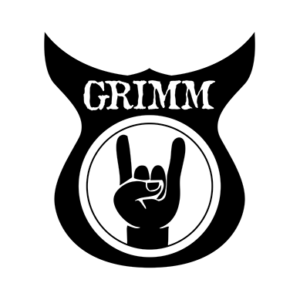
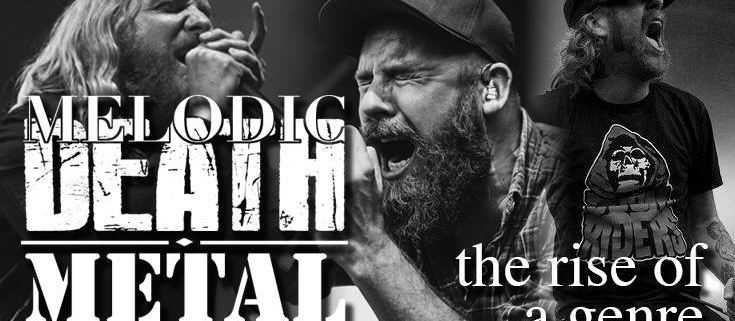
![Entombed - Left Hand Path [Full Album]](https://i.ytimg.com/vi/tsdWLtPAVqM/hqdefault.jpg)

![At The Gates - Blinded By Fear [Official Video]](https://i.ytimg.com/vi/nCtjAmtIGf0/hqdefault.jpg)

![In Flames - Artifacts Of The Black Rain [1995]](https://i.ytimg.com/vi/3qa9-mbMUT8/hqdefault.jpg)
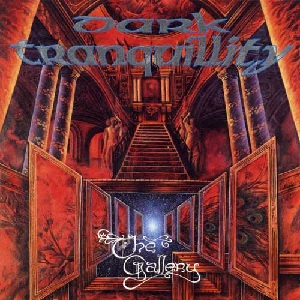
![Dark Tranquillity - Edenspring [Where Death Is Most Alive]](https://i.ytimg.com/vi/d7uuivkoVgE/hqdefault.jpg)
